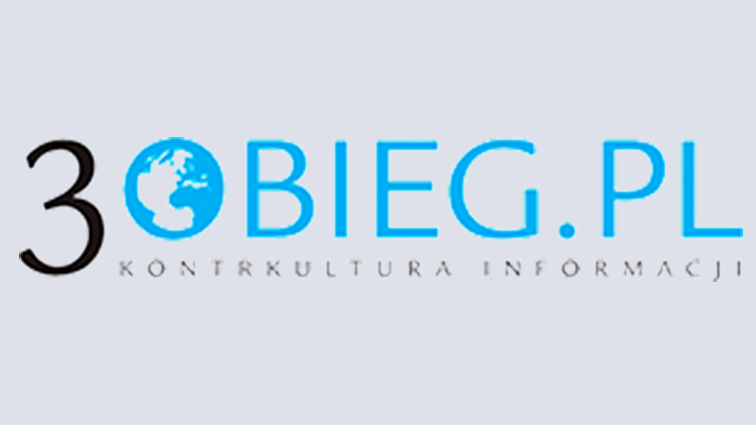Nowy wirus?!

Nowy wirus nazwano „Schmallenberg-virus” i jego wystąpienie oceniono na 4 w czterostopniowej skali zagrożenia epidemiologicznego, czyli jako najwyższy stopień zagrożenia.
 "Schmallenberg-virus", nieznany nauce wirus, pochodzenia tropikalnego (tego typu odmiany przenoszone są najczęściej przez moskity), którego jedna z odmian występowała dotychczas tylko w południowych stanach USA (La Cross-virus – linkz grupyBunyaviridae – link, tej samej z której pochodzi groźny wirus Ebola i wirus ptasiej grypy), został niedawno stwierdzony w farmach hodowlanych bydła, w Północnej Nadrenii- Westfalii i w Holandii.
"Schmallenberg-virus", nieznany nauce wirus, pochodzenia tropikalnego (tego typu odmiany przenoszone są najczęściej przez moskity), którego jedna z odmian występowała dotychczas tylko w południowych stanach USA (La Cross-virus – linkz grupyBunyaviridae – link, tej samej z której pochodzi groźny wirus Ebola i wirus ptasiej grypy), został niedawno stwierdzony w farmach hodowlanych bydła, w Północnej Nadrenii- Westfalii i w Holandii.
Czy mamy się czego obawiać ?
Być może jeszcze nie, ale warto zwrócić uwagę na to, iż wirus taki nie powinien występować w tych szerokościach geograficznych, oraz że jest to całkowicie nowa, nieznana nauce odmiana, czyli najprawdopodobniej mutant.
Biorąc pod uwagę fakt, że większość farm hodowlanych używa antybiotyków, jako stałego dodatku do pasz (w P-Z Westfalii nawet do 96% – link), niszcząc w ten sposób naturalną przyswajalność antybiotyków i reakcję na nie u człowieka, można zacząć się martwić, że tego typu przypadki będą zdarzać się tylko częściej.
Zataczamy bardzo dla nas niebezpieczne koło: nauka i medycyna, które miały chronić nas przed chorobami, przyczyniają się aktualnie do tego, że stajemy się całkowicie bezradni w obliczu nowych i bardzo niebezpiecznych zagrożeń epidemiologicznych. Co z tego, że nauczyliśmy się leczyć większość znanych nam chorób, jeśli wytwarzamy nowe, jeszcze groźniejsze, z którymi nie umiemy sobie radzić ?
"Schmallenberg-virus" może okazać się szalenie niebezpieczny, przede wszystkim dla młodych ludzi, grożąc im w przypadku zachorowania paraliżem i udarem mózgu. Naukowcy są jak na razie bezradni – stwierdzają że nie dysponują żadnymi metodami leczenia zachorowań w takich przypadkach !
Jak na razie nigdzie w mass mediach nie publikuje się informacji o wirusie "Schmallenberg", choć stopień zagrożenia oceniono na najwyższy ! Naszym zdaniem, warto monitorować takie przypadki, ponieważ ukazują nam one prawdę o przemyśle mięsnym i o prawdziwej roli nauki, która częściej chroni producentów, niż konsumentów, czyli zwykłych ludzi.
Poniżej oryginalny tekst na temat wirusa "Schmallenberg" zaczerpnięty z portaluERSOE EDIS:
| Since August 2011 famers and veterinarians in North Rhine-Westphalia (Germany) and The Netherlands have reported clinical disease in cattle and suspected a new introduction of Bluetongue disease. The main clinical signs were fever and a significant drop of milk yield for several days, in some cases also diarrhea and abortions. Samples were submitted to the German national reference laboratory for bluetongue disease at the Friedrich-Loeffler-Institut, Insel Riems. Diagnostic analyses excluded BTV, FMDV, BVDV, BHV-1, MCFV or exotic viruses like EHDV, Rift Valley fever virus or bovine ephemeral fever virus. Therefore, 3 pooled samples from a farm with acute signs of the disease (fever greater than 40 C and milk drop of less than 50 percent) were investigated using metagenomic analysis with a Genome Sequencer FLX instrument (ROCHE). The analysis yielded 6 sequence fragments with homology to the L and the M segments of viruses from the genus Orthobunyavirus. Further metagenomic analyses led to the detection of sequences homologous to Orthobunyavirus S segment. The sequences were related to genomic sequences of Shamonda-, Aino-, and Akabane-virus, viruses which are mainly transmitted by Culicoides spp. The virus was provisionally named as "Schmallenberg-virus," according to the location where the samples originated. The investigation of about 100 samples from farms where the disease was reported with a newly developed real-time RT-PCR targeting the L segment demonstrated 9 positive animals in 4 different farms. Several samples exhibited Cp values below 30. At this moment, it can be stated that genomic sequences of a novel Orthobunyavirus were detected in cattle in Germany. However, no causal relationship between this virus and the observed clinical disease has been established yet. Further investigations are ongoing including PCR analysis of more samples, development of a serological assay, animal experiments as well as attempts on virus isolation. | |
| Biohazard name: | Undiagnosed illness, bovine (new virus susp.) |
| Biohazard level: | 4/4 Hazardous |
| Biohazard desc.: |
Viruses and bacteria that cause severe to fatal disease in humans, and for which vaccines or other treatments are not available, such as Bolivian and Argentine hemorrhagic fevers, H5N1(bird flu), Dengue hemorrhagic fever, Marburg virus, Ebola virus, hantaviruses, Lassa fever, Crimean-Congo hemorrhagic fever, and other hemorrhagic or unidentified diseases. When dealing with biological hazards at this level the use of a Hazmat suit and a self-contained oxygen supply is mandatory. The entrance and exit of a Level Four biolab will contain multiple showers, a vacuum room, an ultraviolet light room, autonomous detection system, and other safety precautions designed to destroy all traces of the biohazard. Multiple airlocks are employed and are electronically secured to prevent both doors opening at the same time. All air and water service going to and coming from a Biosafety Level 4 (P4) lab will undergo similar decontamination procedures to eliminate the possibility of an accidental release. źródło www.globalnaswiadomosc.com |
Wnuk legionisty i przedwojennego przedsiebiorcy zamordowanego przez Niemców w 1941 roku, syn zolnierza AK i NSZ skazanego w 1947 roku na potrójna kare smierci. Odraza do germanców i obrzydzenie do kacapów wyssane z mlekiem matki.

